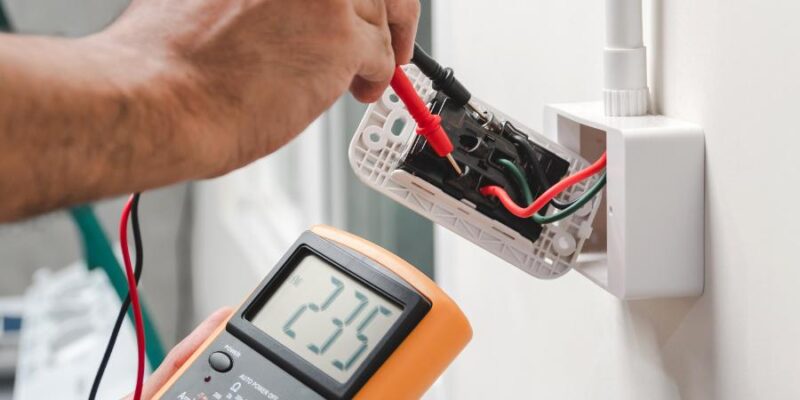Electricity is an essential part of modern life, powering everything from household appliances to industrial equipment. However, improper handling of electrical systems can pose serious risks to both homeowners and electricians. Whether you’re performing routine maintenance, making home upgrades, or working in a professional setting, understanding the potential dangers of electrical work is crucial for preventing accidents and ensuring long-term safety.
By being aware of key electrical hazards and following best practices, homeowners can protect their families, and electricians can reduce job-related risks. Below are some of the most common electrical dangers, along with essential tips for staying safe.
Electrical Shock Hazards
One of the most immediate dangers of working with electricity is the risk of electric shock. This occurs when the human body becomes part of an electrical circuit, allowing current to pass through. Even low-voltage shocks can cause burns, muscle contractions, and heart arrhythmias, while high-voltage shocks can be fatal.
Causes of Electric Shock
- Faulty wiring: Aging electrical systems, improper installations, or damaged wiring can expose individuals to live currents.
- Wet conditions: Water is an excellent conductor of electricity. Using electrical devices with wet hands or near standing water increases the risk of shock.
- Improper grounding: Electrical systems that are not properly grounded can cause metal objects and appliances to become electrified.
Prevention Tips
- Always turn off the power at the breaker before working on electrical circuits.
- Never use electrical equipment near water or damp conditions.
- Ensure all outlets in kitchens, bathrooms, and outdoor areas are equipped with ground fault circuit interrupters (GFCIs).
- Test outlets and wiring regularly to detect faults before they become hazards.
Overloaded Circuits and Fire Risks
Electrical fires are a significant concern, often caused by overloaded circuits, faulty wiring, or malfunctioning electrical appliances. When too many devices draw power from the same circuit, overheating can occur, leading to fire hazards.
Warning Signs of Overloaded Circuits
- Frequent circuit breaker trips
- Dimming or flickering lights when using appliances
- Warm or discolored outlets
- A burning smell coming from outlets or switches
Prevention Tips
- Avoid plugging too many high-wattage appliances into the same outlet.
- Use power strips with built-in surge protectors for additional safety.
- Replace old wiring in homes with outdated electrical systems, as older wiring may not be able to handle modern power demands.
- Schedule an inspection with a qualified electrician if you suspect your home’s wiring is outdated or unsafe.
The Danger of DIY Electrical Work
While many homeowners enjoy tackling DIY projects, electrical work is one area where professional expertise is often necessary. Without proper training, attempting to install, repair, or modify electrical systems can lead to serious injury or property damage.
Common DIY Electrical Mistakes
- Incorrect wiring connections, leading to shorts or fires
- Using the wrong gauge of wire for circuits
- Failing to install proper grounding
- Overloading circuits by installing additional outlets without upgrading the breaker capacity
When to Call a Professional
- If you need to replace or install a new electrical panel
- When rewiring an older home or adding new circuits
- If outlets or switches are sparking, buzzing, or overheating
- When dealing with power outages or repeated breaker trips
Arc Flash and the Importance of Protective Equipment
One of the most dangerous electrical hazards for electricians is an arc flash, which occurs when an electrical current jumps through the air between conductors, creating an explosion of heat and energy. Arc flashes can cause severe burns, blindness, and even fatalities in industrial or high-voltage settings.
Causes of Arc Flash
- Faulty or damaged electrical equipment
- Accidental contact with energized conductors
- Improper maintenance of electrical panels
- Short circuits due to loose connections or corrosion
Arc Flash Prevention
- Wear proper personal protective equipment (PPE), such as flame-resistant clothing, gloves, and face shields when working on electrical systems.
- De-energize circuits before performing maintenance or repairs.
- Conduct regular inspections of electrical panels and high-voltage equipment to detect early signs of damage.
- Follow strict safety protocols when working on or near energized electrical systems.
Grounding and Electrical Safety
Grounding is a critical component of electrical safety, ensuring that excess electrical current has a safe path to dissipate. Without proper grounding, electrical systems can become hazardous, increasing the risk of shocks, appliance damage, and fires.
Signs of Poor Grounding
- Tingling sensations when touching metal appliances
- Frequent static shocks in the home
- Unexplained power fluctuations
- Devices randomly shutting off or malfunctioning
Ensuring Proper Grounding
- Hire a licensed electrician to inspect and upgrade grounding systems in older homes.
- Ensure all major appliances are properly grounded and plugged into three-prong outlets.
- Test outlets with a voltage tester to verify that they are correctly wired and grounded.
Preventative Maintenance and Routine Inspections
Regular electrical maintenance helps prevent many common hazards. Both homeowners and electricians should conduct periodic inspections to identify and resolve potential issues before they become serious risks.
Recommended Maintenance Steps
- Check electrical panels and breaker boxes for signs of corrosion or overheating.
- Replace damaged or frayed cords on appliances and extension cables.
- Test smoke detectors and carbon monoxide alarms to ensure they are functioning properly.
- Ensure outdoor electrical outlets and wiring are weatherproofed and protected from the elements.
Electrical Safety Best Practices for Every Home
In addition to specific preventative measures, general electrical safety habits can help protect both homeowners and electricians from unnecessary risks.
- Never yank cords out of outlets; instead, unplug them by gripping the plug.
- Keep electrical cords away from heat sources and sharp objects that may cause damage.
- Use tamper-resistant outlets in homes with young children to prevent accidental shocks.
- Educate family members about the dangers of electricity and the importance of safety measures.
Conclusion
Understanding electrical safety is crucial for both homeowners and electricians. From preventing electric shocks and fires to reducing the risk of arc flash incidents, staying informed about potential dangers and following proper safety protocols can save lives and prevent costly damage. Whether you’re a homeowner making upgrades or an electrician working with high-voltage systems, prioritizing safety ensures that electrical work is handled responsibly and efficiently.











Comments